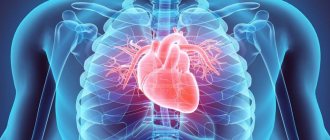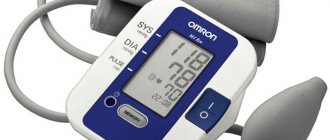Like humans, the average blood pressure in a cat is 120/80 mm Hg. Art. To measure the indicators, a special veterinary tonometer is used. If the value deviates from the optimal level, detailed diagnostics should be carried out and the causes of the violation should be found out. Like people, cats suffer from hypertension and hypotension. These diseases negatively affect the general condition and functioning of the pet. Therefore, it is important to establish an accurate diagnosis in a timely manner and begin treatment.
What are the norms?
Blood pressure (BP) shows the condition of the vascular walls, their physiological resistance, as well as heart rate. The indicator is measured in millimeters of mercury - mmHg. Art. and consists of two values separated by a fraction sign. The first indicator characterizes the level of blood pressure on the walls of the vessel at the moment of maximum heart contraction. The second is the strength of blood pressure at the moment of greatest relaxation of the heart muscle. Normal blood pressure in cats is the same as in humans and averages 120/80 mmHg. Art. If something is wrong with the body and pathological processes develop inside, blood pressure becomes low or high. The main thing is to notice these changes in time and, if necessary, try to eliminate them.
Classification of types of hypertension
Depending on the causes, essential (primary) and symptomatic (secondary) hypertension are distinguished. Primary hypertension develops as an independent disease. It often affects older animals. In this case, the cause of pressure in cats is a worn-out heart and weak vascular tone. The disease can also be hereditary.
Secondary hypertension, by definition, develops against the background of some underlying pathology. Most often, these are diseases of organs involved in the regulation of blood pressure (kidneys, adrenal glands, heart, thyroid gland and others). Secondary hypertension is more difficult to diagnose and treat.
Why measure?
Measuring blood pressure in dogs and cats must be carried out periodically, so that if any disorders progress in the body, they can be noticed in a timely manner and eliminated before complications arise. Blood pressure must be measured at a preventive appointment, which helps reduce the risk of sudden development of a crisis, heart and kidney failure, endocrine and hormonal disorders. The indicators are monitored during and after surgical treatment, because during surgery there is always a risk of internal bleeding and a sharp drop in blood pressure.
Leading veterinary experts advise measuring blood pressure once a year in cats that have reached 5-7 years of age. If Murka is 10 years old or older, measurements should be taken at least once every six months.
How can I help you
Treatment is prescribed only by a veterinarian based on examination and collection of information, interviewing the owner of the mustachioed patient. Therapy is carried out in two parallel or sequential stages - the underlying disease is treated and blood pressure levels are normalized. During treatment, the functioning of the renal system and eyes must be monitored. Often, elimination of the underlying disease leads to normalization of blood pressure and the need for antihypertensive therapy disappears. The duration of the treatment course is determined strictly by a veterinary specialist. Often, antihypertensive medications remain on an ongoing basis.
- amlodipine (90-180 rubles, depending on the number of tablets in the package): orally from 0.5 to 1.25 mg/animal or 0.2 mg/kg once a day or once every 48 hours (two days). It is advisable to divide the tablet with a special tablet knife to reduce the risk of dosage violations. It is not addictive and the effectiveness of long-term use does not decrease.
- enalapril, benazepril (65-300 rubles, depending on the manufacturer) : orally 0.25-0.5 mg/kg of animal weight once a day. Often used in combinations at a dosage of 1.25-1.5 mg/animal per day. In very severe cases, the dose can be doubled, and after stabilization, the dose can be returned to normal levels.
- lisinopril (within 120-150 rubles/pack of 30 tablets): initial maintenance dose of 0.125 mg/kg of body weight, maximum permissible dose during the day – 0.5 mg/kg. Monitoring of kidney function is required. The course lasts 1-2 months, then you need to replace it with drugs that can be taken for a long time.
- sodium nitroprusside : for emergency relief of hypertensive crisis. The dosage is determined only by a specialist and is administered only in a hospital! Dose: 1.5-5 mcg/kg body weight at a rate of 1 minute. Strict monitoring of the animal’s condition is indicated, because a sharp drop in pressure can lead to disruption of brain function (ischemia).
In the presence of edema, diuretics are prescribed:
- furosemide (about 30 rubles/pack of 10 ampoules): 0.5-1 mg/kg per day orally or intramuscularly (injections act faster). The duration of use is determined by the veterinarian based on the general condition;
- torasemide (about 250 rubles/pack of 20 tablets): orally 0.05-0.1 mg/kg once a day. There are cats that are not sensitive to it - there is no pattern, just an individual reaction.
How to measure pressure?
For this procedure, a special digital device is often used.
Various techniques are used to measure blood pressure in cats. The safest and most accurate is to record indicators using a mechanical or digital veterinary tonometer. The cuff is fixed to the paw or tail, then the air should be inflated using a bulb. The finished value will appear on the digital monitor. For greater accuracy and reliability of the data, it is recommended to measure the pressure several times.
The “gold standard” for measuring blood pressure is a direct method performed by peripheral artery catheterization. The procedure is invasive and requires anesthesia to reduce the cat's motor activity, so it is used in extreme cases. Depplerography, ultrasound, photoplethysmography methods are used in advanced veterinary clinics, as they require modern, high-tech equipment. Accordingly, the price of the procedure will be higher.
What can cause high blood pressure?
Arterial hypertension in cats is diagnosed when blood pressure exceeds 150/95-110 mm Hg. Art. In this case, the animal is closely monitored and data is regularly recorded. If the values fluctuate at 160/120, complex drug therapy is urgently prescribed. A blood pressure of 180/120 is considered critical. With such indicators, a hypertensive crisis can occur at any time. In this case, the cat is hospitalized and given emergency care. Based on etiology, there are systemic, secondary and pulmonary hypertension in cats.
Common causes of high blood pressure in cats are:
Indicators may be elevated in animals suffering from diabetes.
- cardiac and vascular pathologies;
- kidney and adrenal dysfunction;
- dysfunction of the thyroid gland;
- progression of systemic pathologies, for example, diabetes.
Portal hypertension, in which high pressure is recorded in the portal veins, can be caused by the following pathologies:
- thrombosis of large vessels;
- splenomegaly;
- hepatitis of various types;
- cirrhosis or fibrosis of the liver;
- cardiovascular diseases.
Good to know
- Cats can hide pain
- Savannah or Serval cats. The main reasons for getting a pet
- Feline urinary retention in cats: a real emergency. Helping a cat who can't urinate
- 8 Causes of Pain in Domestic Cats. An Approach to Recognizing and Providing Therapeutic Care to Your Pet
- Orofacial pain syndrome in cats (causes, pathogenesis, diagnosis and therapy)
- Catnip for cats (uses, similar plants). The world of smells in the animal world
- Basic Tips. How to Care for Your Aging Cat? Helping an Elderly Cat
- Bathing cats (practical and theoretical aspects). Methodology, tools. How to dry it properly? Optimal water temperature?
- 5 Tips: How to Choose a Kitten That's Right for You!
- 4 Facts About Feline Pneumonia: What You Need to Know!
- 7 Causes of Sneezing in Cats: What Pet Owners Need to Know?
Main reasons for the decline
In cats, hypotension is rarely diagnosed, and the condition often progresses against the background of other primary pathologies. Arterial hypotension does not occur on its own. The primary sources of low blood pressure are:
Anesthetic drugs may slightly reduce these indicators.
- heavy internal and external bleeding;
- state of shock;
- exposure to anesthetic during surgery;
- uncontrolled use of certain groups of drugs.
Symptoms of horse racing
Hypertension in cats in the initial stages of development is often asymptomatic. But as the animal’s condition progresses, it becomes noticeably impaired. The cat becomes lethargic, apathetic, sleeps a lot, sometimes refuses to eat, and moves little. Other signs of high blood pressure include:
- dilated pupils;
- abundant vascular network on the cornea;
- visual impairment, retinal detachment;
- photophobia;
- disorientation in space, staggering gait;
- dyspnea;
- formation of edema on the paws;
- convulsions;
- causeless, prolonged meowing.
If the pressure rises to 180/120 mmHg. Art., the risk of developing a hypertensive crisis increases. The pet experiences a coma, increased heart rate, shortness of breath, and profuse drooling.
With reduced levels, the animal becomes excessively drowsy.
With hypotension, blood pressure drops to 90/60 or less. Sudden changes accompanied by characteristic symptoms negatively affect the general condition of the cat. When the indicators decrease, the animal exhibits the following signs:
- slow heart rate;
- drowsiness, weakness;
- fainting;
- tremor of the limbs;
- blanching of the mucous membrane.
What treatment is prescribed?
If your cat exhibits symptoms of high blood pressure, you should immediately take her to see a veterinarian. The fact is that you won’t be able to measure the indicators yourself at home, since a special veterinary tonometer is used for the procedure. An ordinary human will not show exact values. For arterial hypertension, tablets that normalize blood pressure are prescribed:
- "Amlodipine";
- "Enalapril";
- "Lisinopril";
- sodium nitroprusside.
If the pet is prone to edema, then Torasemide is prescribed.
The treatment regimen and dosage are determined by the doctor individually. In the presence of edema, diuretics must be used:
- "Furosemide";
- "Torasemide".
Treatment of hypotension is carried out only in a hospital. Self-medication at home is contraindicated. The following procedures apply:
- infusion of plasma replacement solutions;
- antishock therapy;
- injections that stimulate cardiac activity.
First aid for a pet
Treatment methods for hypertension and hypotension are fundamentally different, so self-prescription of drugs before diagnosis is not allowed. Taking pills gives only short-term results, since usually the main reason lies in a concomitant disease. Without eliminating it, only temporary relief of symptoms is possible. There is also a risk of choosing the wrong dosage, which can worsen the pet’s condition.
Thus, the only acceptable first aid is to immediately contact a veterinarian. Exceptions include only temporary fluctuations, when the reason lies in excessive activity or recently experienced stress (moving, the arrival of a new family member).











